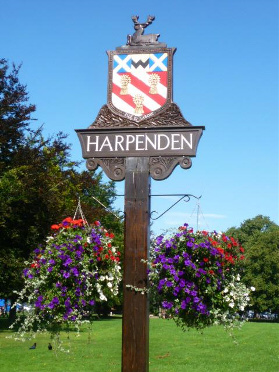
Group Objectives
The group's remit is pre-school, schools, and other education matters.
A main focus has been the intractable question of 'schools places'. The Working Group is endeavouring, in alliance with the Harpenden Parents Group and local councillors, to consider improvements in the system.
Group Membership
A welcome new face on The Harpenden Society committee is that of Chris Armitage, whose watching brief is to head up our Education Working Group, at a time of exciting new school developments in the town, especially the imminent addition of a fourth secondary school, on the Common Lane site at Batford.
As indicated in our Winter 2017 newsletter, Katherine Warington School (KWS) is expected to further consolidate the enviably high reputation enjoyed by Harpenden's existing secondary schools - St George's, Roundwood Park and Sir John Lawes - as educational centres of excellence.
Chris Armitage, as a school governor and member of the Harpenden Secondary Schools Committee, says the collaborative involvement of the existing schools, along with representatives from Rothamsted Research, bodes well for the future success of KWS in maintaining the same high standards in both academic and extramural activities.
It is hoped, says Chris, that that collaboration will yield benefits in a wider context, especially that of Harpenden's future as a community, a subject now being actively debated by all those concerned in formulating the town council's Neighbourhood Plan.
Nowhere is that arguably more pertinent than in matters which in Oxford or Cambridge would traditionally be discussed under the heading of ‘town and gown', and which, in 21st Century Harpenden, are apt to focus on the mundane but crucial issue of traffic congestion around schools at morning start and afternoon departure times.
It is something which, as Chris points out, is not always readily apparent to school staff; teachers normally get to school half an hour or more before their pupils and leave correspondingly later, so might not observe the traffic mayhem first hand. Deterring parents from bringing their older children to school by car with resulting twice-a-day traffic chaos is an immense challenge to which, he admits, there is no obvious solution.
Chris Armitage, a Yorkshireman by birth, was a teacher all his working life until his ‘nominal' retirement from full-time teaching, latterly as assistant head of Sir John Lawes school, five years ago. It is a profession which runs in his family; his wife, son and daughter all earning their living ‘in the classroom'.
He came to Harpenden in 1975, joining the staff at what was then Manland Secondary School, as a PE and English teacher. He concedes that back then it was a relatively low-achieving comprehensive, but that in recent years it has progressed to more than hold its own with the town's other secondary schools.
Chris emphasises the job satisfaction he has derived from teaching, particularly in watching often fairly guileless 11-year olds develop, over five or six years, into fully-rounded and educationally well-qualified members of society.
It is, he says, a tough but very rewarding job, but with the many rewards having to be earned, not least through the need to establish an ethos of mutual respect between teacher and youngster. He maintains that all children, from all social backgrounds, want to learn - something on which a good teacher can build, albeit sometimes involving ‘risks', which serve to add spice to the challenges.
That, in its turn, says Chris, is reflected in students' behaviour. He pays credit to Harpenden's junior schools whose pupils, having reached the age of 11 or so, almost invariably show themselves eager to pursue their studies when they embark on their secondary education.





